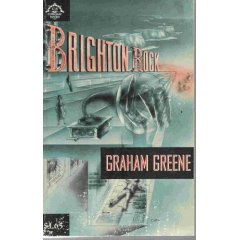
Journey to Ithaca
By Anita Desai
Published By Mandarin Paperbacks as ‘Minerva Edition’
First Published in Great Britain By William Heinemann Ltd.
Way back in October, 1996, when I was still unemployed I used to visit almost regularly British Council Library, Kolkata. At one fine noon I borrowed Anita Desai’s book from the library. From the very first page it captured my attention.
Matteo was a rich Italian who was reared up in a materialistic atmosphere where his parents did not, care for the mental and spiritual development. First, he realized that there is another world of imagination with the help of his British tutor, Fabian. This increased his sense of emptiness which always clings to his heart. He eventually married Sophie, daughter of a banker. She also did not care much about her parents’ sophistication. In stead they both come to India in order to discover the mystery of India, about which Matteo was well aware due to a book Journey to East by Herman Hesse which he read earlier. First he went from Gurus to Gurus in order to realize the mystery of the religion. It appeared to him that his land is a land of Mystery. But he did not find peace in his mind. At last he came to Mother’s ashram. Here he felt that he got spiritual enlightenment at the feet of the Mother.
But Sophie, who was more down-to-earth, now mother of two children---a girl and a boy---Isabel and Guacoma, refused to believe Mother’s identity as a spiritual enlighter. She decides to trace the Mother’s own story. The Mother was originally a Turkish girl called Laila who had fascinated over the art of dancing. She once met a dance troupe from India whose leader was ‘Krishna’. Laila thought that the spiritual fervour in their dance was what she wanted. She joined the dance troupe and towed through Milan and America. At last she came to India, her land of dream where she spiritually belonged. Gradually, she realized that “Krishna’s actual love is dancing”. So she left the troupe and went to attend pilgrimage to Himalyas. She, in the midst of nature, experienced the Eternal Devine Truth and came in contact with his spiritual Master. Gradually she became the Mother.
All these were found by Sophie and she also found a diary of the Mother, which belonged so far to the old ‘Krishna’. Now she returned to the Mother’s ashram to meet Mother and reveal her findings. But she came to know that the Mother was dead a short while ago and Matteo also left the ashram to go to Himalaya where the Mother received her enlightenment. Sophie also decided to go for a pilgrimage.
This novel is cunningly structured, beautifully evocative, rich with sounds, smell and sights of Italy and India, and it draws the reader into the heart of the most untranslatable of human experience.
Anita Desai writes well, lucidly and convincingly, when she describes the outside world. When she describes the pilgrimage that Matteo and Sophie join months after their coming to India, when she describes the beaches of Goa hazy with the clouds of drug that is being smoked there, I felt like a witness. The passage in which Desai describes the meeting between Sophie and the Mother is one of the most beautiful ones in the book. It is in such passages rich with symbols that I could finally glimpse Desai's craft.
Where she fails in this novel is in characterisation. One never understands how Matteo ticks, why he is ready to accept anyone and everyone as his saviour. Why he accepts that living in filth is essential to spiritual quest. The part dealing with Laila is the least convincing in the entire book. That this girl is yet another rebel is fine, but that she is so utterly uncaring towards the needs of all but her own is portrayed a bit too thinly. That she becomes the leading dancer of an Indian dance troupe within two months of starting to learn the dance is as unconvincing as her later incarnation as the Mother. The one character who has some spirit, one person who comes across as being a real person instead of being a two dimensional caricature is Sophie, but unfortunately her part is not sketched to the full. Just when I thought that this is a good book (the part where Sophie sees the Mother), the novel loses all the tension that was built up till then. It suddenly becomes too filmy, too unreal to be credible. If this journey is a journey to Ithaca, it is one that does not fulfill, that does not satisfy.
Excerpt of Review by other reviewers:
"A daring, colorful novel almost impossible to absorb in one reading... Anita Desai is a fluent artist, working from one vivid salience to the next. She knows the different lights of India, and she sees everything under the sun."
-- Paul West, The New York Times Book Review
"A triumph... What distinguishes the voice of Anita Desai is the physical intensity of her prose, the range of her capacious intelligence, her unsentimental compassion... Her work is an illumination and a blessing."
-- Pearl K. Bell, The New Republic
"A rich tapestry of the contemporary human condition in an alien environment ... Desai creates images rooted in the external environment that leave indelible imprints on our internal landscapes."
-- Mandira Sen, San Francisco Chronicle
"Powerful...a wonder of exquisitely crafted prose. As she piles detail upon detail, the intensity of India is seamlessly conjured up."
-- Judith Weinraub, Washington Post Book World
"A marvelous writer ... The book is exhilaratingly alive."
-- Esther Harriott, New York Newsday




